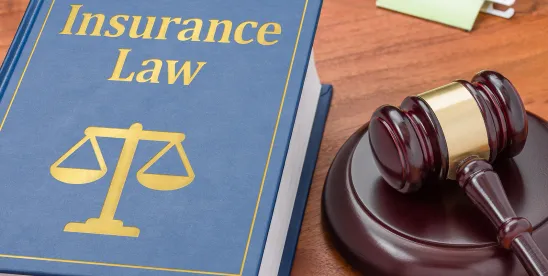For policyholders, insurance is meant to provide peace of mind—a promise that when disaster strikes, they’ll have financial support to rebuild and recover. But as two recent cases show, the question of what qualifies as covered “direct physical loss or damage” can lead to drastically different outcomes in court.
In two recent California cases, both policyholders sought coverage after wildfire smoke and debris affected their properties. One court ruled in favor of coverage. Bottega, LLC v. National Surety Corporation, No. 21-cv-03614-JSC (N.D. Cal. Jan. 10, 2025). The other sided with the insurer. Gharibian v. Wawanesa General Insurance Co., No. B325859, 2025 WL 426092 (Cal. Ct. App. Feb. 7, 2025). These contrasting decisions highlight issues policyholders may encounter in securing coverage for smoke-related damage and the ongoing debate over what constitutes “direct physical loss or damage,” a key phrase in most property insurance policies.[1]
This article explores these cases, the influence of COVID-19 coverage litigation on the interpretation of “direct physical loss or damage,” and what policyholders can learn to better protect their rights.[2]
The Importance of “Direct Physical Loss or Damage” in Insurance Disputes
At the heart of both cases is a fundamental question: What does it mean for a property to suffer “direct physical loss or damage” under an insurance policy?
Insurance companies often take a narrow view, arguing that physical loss requires structural damage, like a collapsed roof. Policyholders, on the other hand, argue that contamination—such as smoke infiltration or toxic debris—permeates property and cannot simply be dusted off or ventilated, rendering property unusable for its intended use and qualifying as a covered physical loss.
Courts struggled with this question in the wake of the COVID-19 pandemic which sparked thousands of lawsuits over business closures and contamination claims. Some courts have ruled that lasting, tangible physical alteration of property is required, while others have found that loss of use due to presence of the virus in air or on surfaces was enough.
This debate played out in Bottega and Gharibian, with strikingly different results.
Bottega, LLC v. National Surety Corporation: A Win for the Policyholder
In Bottega, a Napa Valley restaurant faced significant disruptions after the 2017 North Bay Fires. Although the fires did not burn the restaurant itself, thick smoke, soot, and ash inundated the premises, forcing it to close for one day after the fire and for a week shortly thereafter. When it did reopen, for the next few months, it was limited to less than one-third of the seating temporarily because of the smell of the smoke, soot, and ash. Throughout this period, employees routinely cleaned the walls and upholstery to remove the smell and ultimately replaced the upholstery. The smell of fire remained for two years. The restaurant sought coverage under its commercial property insurance policy, which covered losses due to “direct physical loss or damage.”
The insurer, National Surety, initially made some payments under the policy’s civil authority provision but later denied broader coverage. The insurer argued that because the restaurant was still physically intact, it had not suffered a “physical loss” as required by the policy.
The court rejected National Surety’s narrow interpretation, ruling in favor of Bottega. The key findings were:
- Smoke and soot contamination rendered the property unfit for normal use, meeting the standard for “direct physical loss.”
- The restaurant had to suspend operations, triggering business income coverage under the policy.
- The insurer’s own admissions confirmed that the premises had suffered smoke damage, undermining its argument against coverage.
Unlike many COVID-19 which relied on the issuance of stay-at-home orders to conclude that the virus did not cause loss or damage, the Bottega court found that the insured reopened during the state of emergency declared for the fire. It also described, in some depth, the nature and extent of the damage caused by the smoke. This decision aligns with prior rulings recognizing that contamination impairing the usability of a property—whether from smoke, chemicals, or other pollutants—can meet the threshold for physical loss. Courts have previously found that asbestos contamination, toxic fumes, and harmful mold all permeated property and constituted physical damage, even if the structure itself remains intact.
In Bottega, the policyholder’s success was largely due to strong evidence showing that smoke infiltration impacted business operations and required extensive remediation, causing the policyholder’s loss.
Gharibian v. Wawanesa General Insurance Co.: A Win for the Insurer
While Bottega marked a win for policyholders, Gharibian v. Wawanesa shows how courts can take a different approach, often to the detriment of policyholders.
Homeowners in Granada Hills sought coverage after the 2019 Saddle Ridge Fire deposited wildfire debris around their home. Although the flames did not reach their property, their property was covered in soot and ash, and plaintiffs asserted that smoke odors lingered within the home.
Their insurer, Wawanesa, paid $23,000 for professional cleaning services that plaintiffs never used, but later denied additional coverage, arguing that there was no “direct physical loss to property” because the home was structurally intact and that removable debris did not qualify.
The court sided with the insurer, emphasizing that:
- The smoke and soot did not cause structural damage or permanently alter the property.
- The debris did not “alter the property itself in a lasting and persistent manner” and was “easily cleaned or removed from the property.”
- The plaintiffs’ own expert concluded that “soot by itself does not physically damage a structure” and that ash only creates physical damage when left on the structure and exposed to water, which didn’t appear to have happened. He also acknowledged that “the home could be fully cleaned by wiping the services, HEPA vacuuming and power washing the outside.” It followed that he could not establish that the property suffered lasting harm from the smoke.
The Long Shadow of COVID-19 Litigation: Raising the Bar for “Physical Loss or Damage”
Given the large volume of COVID-19 coverage cases, the courts’ experience doubtless has shaped how they interpret “physical loss or damage” in insurance policies, particularly concerning business interruption claims. Many businesses sought coverage for losses incurred due to (1) government-mandated shutdowns, arguing that the inability to use their properties constituted a direct physical loss, or (2) the presence of COVID-19 in air or on surfaces made properties unsafe for normal use. In the COVID-19 context, courts have largely rejected both arguments.
These decisions effectively raised the threshold for what constitutes “physical loss or damage,” making it more challenging for policyholders to claim coverage for intangible or non-structural impairments. This heightened standard has significant implications for claims involving smoke contamination from wildfires. The differing rulings in Bottega and Gharibian show the inconsistencies the standard yields.
In Gharibian, the court, in a case in which there was no evidence that the insured undertook any remediation yet the insurer still paid considerable monies, cited California Supreme Court precedent, which held that COVID-19 did not cause physical loss because (1) the virus did not physically alter property, and (2) it was a temporary condition that can be remedied by cleaning. Another Planet Entertainment, LLC v. Vigilant Insurance Co., 15 Cal. 5th 1106 (2024). Applying this logic, the Gharibian court determined that in that particular case, the evidence was (1) soot and char debris did not alter the property in a lasting and persistent manner, and (2) the debris was easily cleaned or removed from the property. Therefore, fire debris does not constitute “direct physical loss to property.”
Meanwhile, the Bottega court, with the benefit of a robust showing of how smoke permeated the property of a sympathetic plaintiff, cited another COVID-19 business interruption case, Inns-by-the-Sea v. California Mutual Ins. Co., 71 Cal. App. 5th 688 (2021), to reach the opposite conclusion. The court found that, whereas a virus like COVID-19 can be removed through cleaning and disinfecting, smoke is more like noxious substances and fumes that physically alter property.
To reconcile these results in their favor, policyholders must now provide compelling evidence that such contamination has caused tangible, physical alterations to their property to meet this elevated threshold. This development underscores the importance of thorough documentation and expert testimony in substantiating claims for non-visible damage.
Key Takeaways
These cases illustrate the fine line courts draw when assessing whether contamination rises to the level of a physical loss:
- The nature of the damage matters – In Bottega, the insured proved that smoke infiltration rendered the property temporarily unfit for use. In Gharibian, the court saw the debris as a removable nuisance rather than a physical loss.
- Burden of proof is critical – The Bottega plaintiffs provided stronger evidence linking their loss to physical damage, while Gharibian plaintiffs could not show a lasting impact on their property (much less one the insured felt required remediation).
- Challenge denials with expert testimony – Some insurers may argue that smoke and soot are “removable” and do not qualify as damage. Policyholders should counter this with expert evidence demonstrating how smoke contamination affects long-term usability and air quality.
- Consider the forum for litigation – As seen in Bottega and Gharibian, which court hears the case can significantly affect the outcome. When possible, policyholders should seek a jurisdiction with favorable precedents or challenge insurers’ attempts to move cases to less policyholder-friendly forums.
Final Thoughts
Wildfires raise critical questions about insurance coverage for smoke and debris damage. The rulings in Bottega and Gharibian show the ongoing battle over what counts as “direct physical loss,” with courts reaching different conclusions.
While Bottega is a win for policyholders, Gharibian suggests that insurers will continue to push for restrictive interpretations and to analogize losses to COVID-19. Policyholders must be proactive—documenting their losses, seeking expert opinions, and being prepared to challenge denials.
Ultimately, courts and policymakers must recognize that insurance should protect against real-world risks, not just total destruction. Until then, policyholders must be prepared to fight for the coverage they deserve.
[1] While these policies did not expressly cover smoke damage, many property policies do and questions concerning whether the policies cover smoke-related damage would not be available to insurers. This underscores the importance of reviewing the policy wording and speaking with your insurance agents and policyholder side insurance counsel.
[2] Even when the insurance company acknowledges that their policy covers smoke-related damage, there may be disputes concerning the amounts they are obligated to pay. To assess the scope of the insurer remediation proposal, policyholders are encouraged to retain their own remediation consultants to provide their own proposals, which can then serve as the basis for ensuring an apples-to-apples comparison and negotiation.





 />i
/>i
